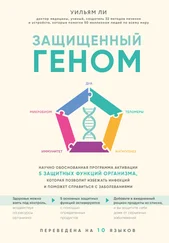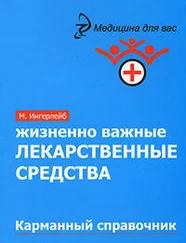79. Mountifield, J.A. “Serum vitamin B12 and folate levels in women taking oral contraceptives.” Canadian Family Physician 32 (1986): 863; McArthur, Jennifer O., HoMan Tang, Peter Petocz, and Samir Samman. “Biological variability and Impact of oral contraceptives on vitamins B 6, B 12and folate status in women of reproductive age.” Nutrients 5, no. 9 (2013): 3639–3643; Palmery, M., A. Saraceno, A. Vaiarelli, and G. Carlomagno. “Oral contraceptives and changes in nutritional requirements.” European Review for Medical and Pharmacological Sciences 17, no. 13 (2013): 1804–1813.
80. McArthur, Jennifer O., HoMan Tang, Peter Petocz, and Samir Samman. “Biological variability and Impact of oral contraceptives on vitamins B 6, B 12and folate status in women of reproductive age.” Nutrients 5, no. 9 (2013): 3634–3645; Sütterlin, Marc W., Stefanie S. Bussen, Lorenz Rieger, Johannes Dietl, and Thomas Steck. “Serum folate and Vitamin B 12levels in women using modern oral contraceptives (OC) containing 20 μg ethinyl estradiol.” European Journal of Obstetrics & Gynecology and Reproductive Biology 107, no. 1 (2003): 57–61; Green, Timothy J., Lisa A. Houghton, Ursula Donovan, Rosalind S. Gibson, and Deborah L. O’Connor. “Oral contraceptives did not affect biochemical folate indexes and homocysteine concentrations in adolescent females.” Journal of the American Dietetic Association 98, no. 1 (1998): 49–55.
81. Lassi, Zohra S., and Zulfiqar A. Bhutta. “Clinical utility of folate-containing oral contraceptives.” International Journal of Women’s Health 4 (2012): 185–190; Taylor, Thomas N., Raymond A. Farkouh, Jonathan B. Graham, Antje Colligs, Marion Lindemann, Richard Lynen, and Sean D. Candrilli. “Potential reduction in neural tube defects associated with use of Metafolin-fortified oral contraceptives in the United States.” American Journal of Obstetrics and Gynecology 205, no. 5 (2011): 460-e1; Holzgreve, Wolfgang, Klaus Pietrzik, Berthold Koletzko, and Christel Eckmann-Scholz. “Adding folate to the contraceptive pill: a new concept for the prevention of neural tube defects.” The Journal of Maternal-Fetal & Neonatal Medicine 25, no. 9 (2012): 1529–1536; Wiesinger, Herbert, Urte Eydeler, Frank Richard, Dietmar Trummer, Hartmut Blode, Beate Rohde, and Konstanze Diefenbach. “Bioequivalence evaluation of a folate-supplemented oral contraceptive containing ethinylestradiol/drospirenone/levomefolate calcium versus ethinylestradiol/drospirenone and levomefolate calcium alone.” Clinical Drug Investigation 32, no. 10 (2012): 673–684.
82. Shere, Mahvash, Priya Bapat, Cheri Nickel, Bhushan Kapur, and Gideon Koren. “Motherisk rounds: the effectiveness of folate-fortified oral contraceptives in maintaining optimal folate levels to protect against neural tube defects: a systematic review.” Journal of Obstetrics and Gynaecology Canada 37, no. 6 (2015): 527–533.
83. Leeton, John. “Depression induced by oral contraception and the role of vitamin B6 in its management.” Australian and New Zealand Journal of Psychiatry 8, no. 2 (1974): 85–88; Webb, J.L. “Nutritional effects of oral contraceptive use: a review.” The Journal of Reproductive Medicine 25, no. 4 (1980): 150–156; Rose, D.P., J.E. Leklem, R.R. Brown, and C. Potera. “Effect of oral contraceptives and vitamin B6 supplements on alanine and glycine metabolism.” The American Journal of Clinical Nutrition 29, no. 9 (1976): 956–960; Rios-Avila, Luisa, Bonnie Coats, Maria Ralat, Yueh-Yun Chi, Øivind Midttun, Per M. Ueland, Peter W. Stacpoole, and Jesse F. Gregory. “Pyridoxine supplementation does not alter in vivo kinetics of one-carbon metabolism but modifies patterns of one-carbon and tryptophan metabolites in vitamin B6– insufficient oral contraceptive users.” The American Journal of Clinical Nutrition 102, no. 3 (2015): 616–625.
84. Там же; Palmery, M., A. Saraceno, A. Vaiarelli, and G. Carlomagno. “Oral contraceptives and changes in nutritional requirements.” European Review for Medical and Pharmacological Sciences 17, no. 13 (2013): 1805–1808.
85. Akinloye, O., T.O. Adebayo, O.O. Oguntibeju, D.P. Oparinde, and E.O. Ogunyemi. “Effects of contraceptives on serum trace elements, calcium and phosphorus levels.” West Indian Medical Journal 60, no. 3 (2011): 308–315; Dante, Giulia, Alberto Vaiarelli, and Fabio Facchinetti. “Vitamin and mineral needs during the oral contraceptive therapy: a systematic review.” International Journal of Reproduction, Contraception, Obstetrics and Gynecology 3, no. 1 (2016): 1–10; Hess, Frances M., Janet C. King, and Sheldon Margen. “Zinc excretion in young women on low zinc intakes and oral contraceptive agents.” The Journal of Nutrition 107, no. 9 (1977): 1610–1620.
86. Palmery, M., A. Saraceno, A. Vaiarelli, and G. Carlomagno. “Oral contraceptives and changes in nutritional requirements.” European Review for Medical and Pharmacological Sciences 17, no. 13 (2013): 1808–1810; Webb, J.L. “Nutritional effects of oral contraceptive use: a review.” The Journal of Reproductive Medicine 25, no. 4 (1980): 150–156.
87. Akinloye, O., T.O. Adebayo, O.O. Oguntibeju, D.P. Oparinde, and E.O. Ogunyemi. “Effects of contraceptives on serum trace elements, calcium and phosphorus levels.” West Indian Medical Journal 60, no. 3 (2011): 310–315.
88. Hendrickson-Jack, Lisa. “FFP 203 | The Pill Problem | Ross Pelton.” Fertility Friday Podcast. Podcast Audio, June 1, 2018. fertilityfriday.com/203.
89. International Collaboration of Epidemiological Studies of Cervical Cancer. “Cervical cancer and hormonal contraceptives: collaborative reanalysis of individual data for 16 573 women with cervical cancer and 35 509 women without cervical cancer from 24 epidemiological studies.” The Lancet 370, no. 9599 (2007): 1609–1621; Smith, Jennifer S., Jane Green, Amy Berrington De Gonzalez, Paul Appleby, Julian Peto, Martyn Plummer, Silvia Franceschi, and Valerie Beral. “Cervical cancer and use of hormonal contraceptives: a systematic review.” The Lancet 361, no. 9364 (2003): 1159–1167; Madeleine, Margaret M., Janet R. Daling, Stephen M. Schwartz, Katherine Shera, Barbara McKnight, Joseph J. Carter, Gregory C. Wipf. “Human papillomavirus and long-term oral contraceptive use increase the risk of adenocarcinoma in situ of the cervix.” Cancer Epidemiology and Prevention Biomarkers 10, no. 3 (2001): 171–177.
90. Hendrickson-Jack, Lisa. “FFP 095 | Cervical Cancer & The Pill | Menstrual Suppression | Cervical Dysplasia | Abnormal Pap | No More Periods? The Blessings of the Curse | Dr. Susan Rako.” Fertility Friday Podcast. Podcast Audio, September 9, 2016. fertilityfriday.com/95.
91. Braaten, Kari P., and Marc R. Laufer. “Human papillomavirus (HPV), HPV-related disease, and the HPV vaccine.” Reviews in Obstetrics and Gynecology 1, no. 1 (2008): 2–10; Centers for Disease Control and Prevention. Genital HPV Infection Fact Sheet. (2004). Rockville, MD: CDC National Prevention Information Network.
92. Marks, Morgan, Patti E. Gravitt, Swati B. Gupta, Kai-Li Liaw, Amha Tadesse, Esther Kim, Chailert Phongnarisorn et al. “Combined oral contraceptive use increases HPV persistence but not new HPV detection in a cohort of women from Thailand.” Journal of Infectious Diseases (2011): 1509.
93. Beral, Valerie, Carol Hermon, Clifford Kay, Philip Hannaford, Sarah Darby, and Gillian Reeves. “Mortality associated with oral contraceptive use: 25 year follow up of cohort of 46 000 women from Royal College of General Practitioners’ oral contraception study.” The BMJ 318, no. 7176 (1999): 96–100.
94. Piyathilake, Chandrika J., Olga L. Henao, Maurizio Macaluso, Phillip E. Cornwell, Sreelatha Meleth, Douglas C. Heimburger, and Edward E. Partridge. “Folate is associated with the natural history of high-risk human papillomaviruses.” Cancer Research 64, no. 23 (2004): 8788–8793; Piyathilake, Chandrika J., Maurizio Macaluso, Ilene Brill, Douglas C. Heimburger, and Edward E. Partridge. “Lower red blood cell folate enhances the HPV-16–associated risk of cervical intraepithelial neoplasia.” Nutrition 23, no. 3 (2007): 203–210; Zhao, W., M. Hao, Y. Wang, N. Feng, Z. Wang, W. Wang, J. Wang, and L. Ding. “Association between folate status and cervical intraepithelial neoplasia.” European Journal of Clinical Nutrition (2016); Jia, W.L., L. Ding, Z.Y. Ren, T.T. Wu, W.M. Zhao, S.L. Fan, and J.T. Wang. “Effects of both folic acid, p16 protein expression and their interaction on progression of cervical cancerization.” Chinese Journal of Epidemiology 37, no. 12 (2016): 1647–1652; Hao, Min, Weihong Zhao, Lili Zhang, Honghong Wang, and Xin Yang. “Low folate levels are associated with methylation-mediated transcriptional repression of miR-203 and miR-375 during cervical carcinogenesis.” Oncology Letters 11, no. 6 (2016): 3863–3869; Li, Q.L., L. Ding, J. Nan, C.L. Liu, Z.K. Yang, F. Chen, Y.L. Liang, and J.T. Wang. “Relationship and interaction between folate and expression of methyl-CpG-binding protein 2 in cervical cancerization.” Chinese Journal of Epidemiology 37, no. 7 (2016): 985–991; Bai, Li-Xia, Jin-Tao Wang, Ling Ding, Shi-Wen Jiang, Hui-Jie Kang, Chen-Fei Gao, Xiao Chen, Chen Chen, and Qin Zhou. “Folate deficiency and FHIT hypermethylation and HPV 16 infection promote cervical cancerization.” Asian Pacific Journal of Cancer Prevention 15, no. 21 (2014): 9313–9317.
Читать дальше
Конец ознакомительного отрывка
Купить книгу












